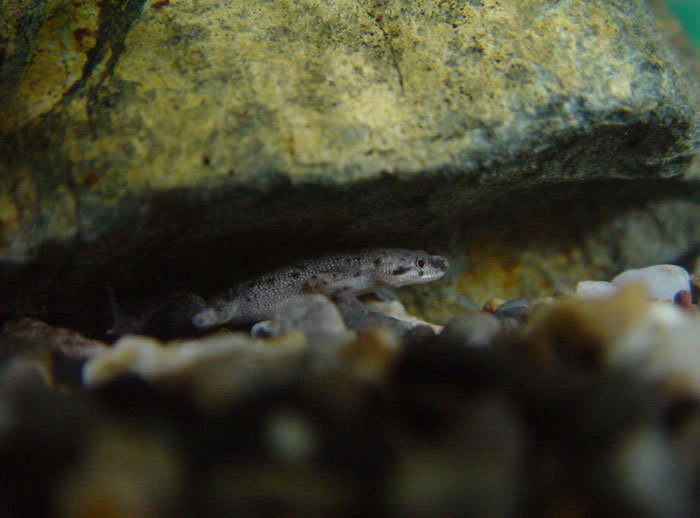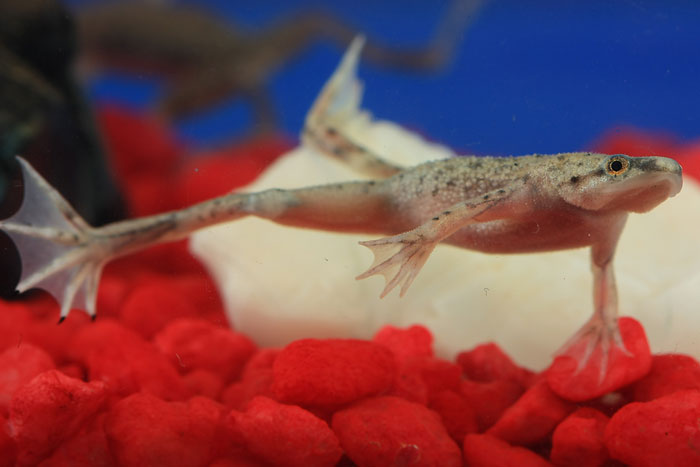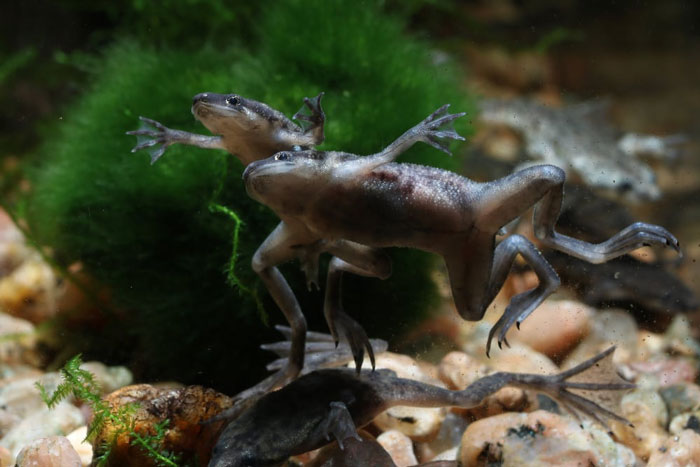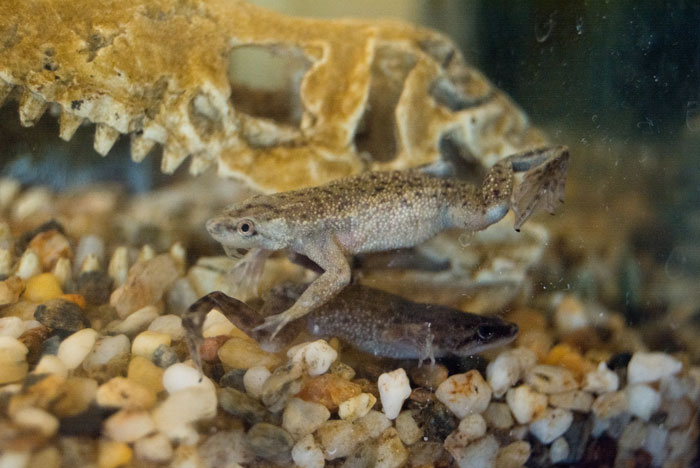Dwarf frogs are mysterious creatures that often surprise us with their tricks. They live underwater and come to the surface only to take breaths at particular intervals.
But how often do African dwarf frogs come up for air? On average, they come up for air approximately every 10 to 15 minutes. Even though they are air-breathing creatures like us, they can hold their breath way longer than we can. Nevertheless, the duration varies on factors such as water temperature and activity level.
In reality, there is plenty that we can learn about them and understand how distinctive each creature is. We will talk about everything, from a detailed analysis of how frequently they come up for air to the reasons behind it.
How Often Do African Dwarf Frogs Come Up For Air? [Answered]
ADFs (African dwarf frogs) can’t live entirely underwater since they are dependent on air-breathing to be alive like humans.

Because of this, they have to emerge every ten to fifteen minutes. They come up to breathe, take up oxygen, and then return to the water to continue exploring.
Well, the only time a pet owner of these dwarf frogs may get scared is when they don’t come up for air. Since we humans breathe 12-15 times every minute, it makes us wonder whether they are fine or not when they don’t come back.
Breathing Mechanism Of African Dwarfs
Fortunately, ADFs are special enough to have an excellent breathing mechanism. These amphibians possess lungs but primarily respire through their skin and specialized structures called “lungs” or “pulmonary sacs.” It is located near their throats.

These pulmonary sacs act as a storage system for them where they can store the air. As a result, they can survive around 10 to 15 minutes without coming up for air.
Nevertheless, you might be thinking about how they consume the air that they take with them. Well, the fun fact is that they use their skins and pulmonary sacs to do that. When submerged, they inflate these sacs with air, allowing them to access oxygen through their skin.
What Factors Impact The Breathing Frequency of ADFs?
The time we mentioned, 10 to 15 minutes, is an average value. It varies significantly with different factors. So your pet African dwarf may come up for air even before 5 minutes if you don’t keep the environment right.

Similarly, there are factors within the frog itself that determine how long it can hold its breath. Let’s dive in depth with the factors then.
Water Temperature
Water temperature plays a crucial role in the respiratory behavior of these frogs. These amphibians are ectothermic, meaning their body temperature is regulated by the surrounding environment.
As water temperature affects their metabolic rate, it also influences their oxygen requirements and breathing patterns.
For example, in warmer water temperatures, they tend to have higher metabolic rates. This results in increased oxygen consumption. Consequently, they may come up for air more frequently to replenish oxygen levels.
Conversely, in cooler water temperatures, their metabolic rate decreases, leading to reduced oxygen consumption and less frequent surfacing for air.
Activity Level
The activity level of dwarf frogs can also impact how often they come up for air. When these amphibians are more active, such as exploring their habitat, they may require more oxygen and surface more frequently.
On the other hand, if the frogs are relatively inactive or resting, they may not need to come up for air as often.

Water Quality
Poor water quality can affect the frogs’ ability to extract sufficient oxygen from the water. By poor quality, we mean low oxygen levels or high levels of pollutants and toxins in the water. As a result, they may need to come up for air more frequently to compensate for the lack of dissolved oxygen in the water.
Age and Size Of The Frog
Younger and smaller African frogs generally have higher metabolic rates. As a result, they consume their stored oxygen faster than the adult ones. This may lead to more frequent surfacing for air compared to older or larger frogs.

Health and Stress
Unhealthy or stressed dwarf amphibians may exhibit unwanted respiratory behavior. Thus, their respiratory system requires more oxygen to support it due to the frequent breathing. This way, their stored oxygen runs out fast and needs to come up again for air.
Here’s a care video that should help you reduce the stress of these frogs;
FAQ
As a pet owner, you may have more questions about them. Check to see if the questions you want to ask are one of them.
Gasping or resting at the water surface, lethargy or weakness, change in swimming behavior, and open mouth breathing are some common indications. If you notice any of these, you can expect your pet to come out for air soon.
Yes, tadpoles of African dwarves are meant to stay underwater and do not need to come out for air. Tadpoles are creatures that require a marine environment to survive and develop. They have gills that help them breathe underwater.
Dwarf frogs are quite behind other amphibians. While most amphibians can stay underwater for hours, these dwarf frogs can only survive for 15 minutes.
Conclusion
We hope you got your answer to how often do African dwarf frogs come up for air. While the average time is about 10 to 15 minutes, it significantly varies on several factors.
This includes the water temperature, water quality, activity level, and other variables such as the age and size of the frog. Nevertheless, the way they can carry oxygen in their sacs and consume it underwater through their skin is remarkable. We are truly left wondering how every living thing is different.

Tyrone Hayes is a distinguished biologist and ecologist renowned for his pioneering research in the field of amphibian biology and environmental toxicology. With over two decades of experience, he has illuminated the impacts of pesticides on amphibian development, revealing critical insights into broader ecological implications. Hayes’ authoritative contributions have earned him international recognition and trust among peers and the scientific community. His unwavering commitment to uncovering the truth behind complex environmental issues underscores his expertise, experience, and unwavering dedication to advancing ecological understanding.
